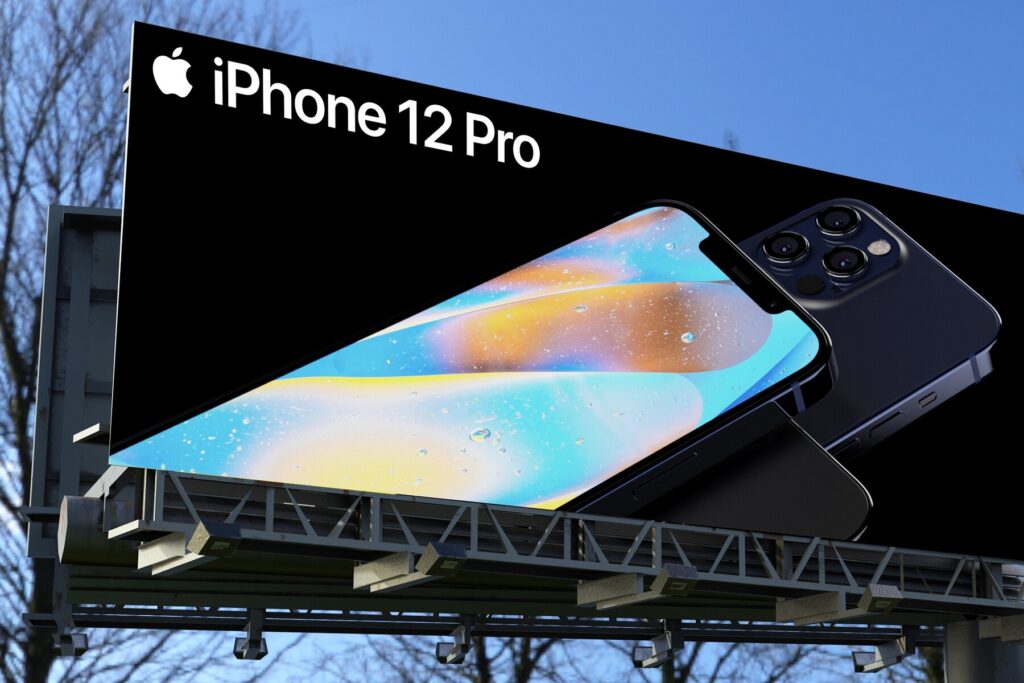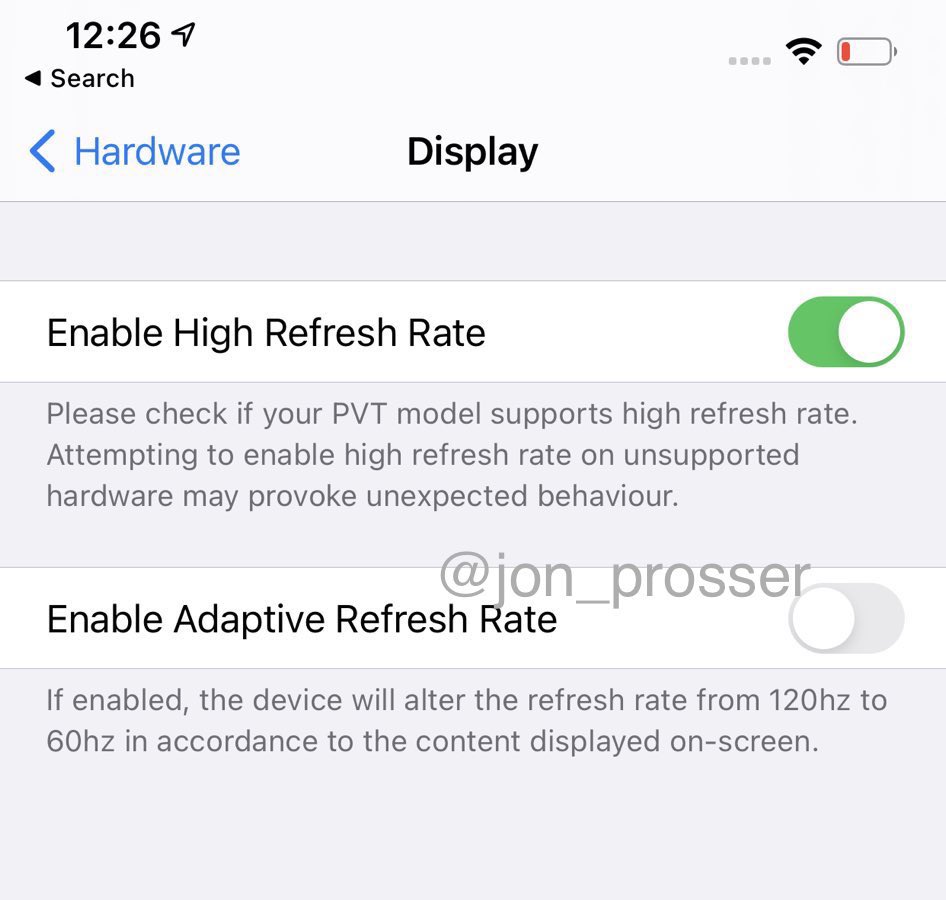Mega Apple leak: iPhone 12 Pro Max hands-on video, pictures show 120Hz, LIDAR settings, 4K @ 240fps and more

Image EverythingApplePro
In fact, it can be described as a mega-leak of information about the upcoming flagship Apple iPhone 12. In the past few hours, not only screenshots of iPhone 12 Pro Max settings have appeared. But also a short hands-on video – some features such as a LIDAR sensor, new camera features. And 120 Hz ProMotion seems to be confirmed, even if Apple may still be struggling with issues.
There has actually been a lot of new information over the past few hours about Apple’s upcoming iPhone 12, specifically the new 6.7-inch iPhone Pro Max. It all started on Twitter when controversial Youtuber and host John Prosser took some screenshots (see below) of the alleged iPhone 12. Pro Max shared during the PVT phase that he offered many new features, in particular:
- High Refresh Rate (120 Hz) on supported models
- Adaptive Refresh Rate, i.e. automatic adjustment depending on the content
- LIDAR camera features such as LIDAR-supported autofocus, object recognition in video and night mode
- New slow-motion modes: 4K @ 120 fps and 4K @ 240 fps
- Extended night mode with extended exposure times
- Advanced noise reduction
- Zoom features as well as bit depth video

iPhone 12 Pro Max models with and without 120 Hz
Here, perhaps, it should be explained what PVT means. The acronym stands for “Production Validation Test,” and is the final phase of testing before mass production. Which Prosser said will begin late next month. He also emphasizes that, according to the source, there are not only iPhone 12 Pro Max models with 120Hz feature. But also without it, so the settings above indicate that the tester should check which option he is using.
The screenshots and hands-on video below do not yet confirm that Apple will necessarily enable 120Hz in the Pro models but suggest they are currently still working. Which was already suggested a few days ago. was.
Here’s a screenshot from the iPhone 12 Pro Max video we have.
Phone is in a PVT “stealth” case. But here’s you best look at the notch.
Bezels are smaller, display is a tad larger — making the notch “appear” a little smaller.
Screenshot is brightened to show bezels. pic.twitter.com/WWZw3XdzMk
— Jon Prosser (@jon_prosser) August 25, 2020
Face ID works from a wider angle
He subsequently shared a photo from a hands-on video that was leaked to him and provided additional information about the iPhone 12 Pro Max test device. Such as the fact that it was hidden in a stealth case and therefore only this front design could be seen. Unlike earlier leaks, the notch remains roughly the same size. But since it’s a larger 6.7-inch display, it looks a little less wide. The bezels are slightly reduced compared to the iPhone 11 Pro Max.
A few more details followed in a follow-up tweet and in the latest issue of the Prosser’s FrontPageTech episode that we’ve embedded below. According to the source, Apple did not reduce the size of the True Depth camera. But Face ID has been optimized and now works even when the iPhone is on the table. As it was rumored, the sides of the 12th generation iPhone are now flat, like the iPhone 4. The glass is slightly rounded on the sides. At the back, the camera module should now expand in size by about 10 percent.
Final iPhone 12 and iPhone 12 Pro camera design?
The well-known Apple Youtuber EverythingApplePro has also shared some photos in collaboration with Leaker Max Weinbach over the past few hours and created a new video that mentions Prosser’s leak and some previous hints, among others (see below). For example, he goes to the supposedly final design that a very active Twitter poster posted by Komiya a few days ago. Which should show the exact location of the sensors in the camera module of the corresponding iPhone 12 variants:
— Komiya (@komiya_kj) August 25, 2020
Problems with 120 Hz in the 6.1 inch iPhone 12 Pro?
XDA developer Max Weinbach also shared photos of the 6.1-inch iPhone 12 Pro PVT test device via EverythingApplePro (the tweet claims the iPhone 12 Pro Max, but it’s a smaller iPhone 12 Pro) that show the same settings. Apple allegedly still had problems with the 6.1-inch version running at 120Hz, at least as Youtuber claims in the video below.
Mass production starts in September
While display supply chain analyst Ross Young continues to warn that Apple cannot actually deliver a 120Hz display based on its supply chain information, at least with energy-efficient LTPO backplanes and adaptive refresh rates. Leaker iAppleTimes claims that it figured out. that both iPhone 12 Pro models will start by manually selecting the refresh rate (60Hz or 120Hz). He also mentions that production should begin in September. The iPhone 12 and iPhone 12 Max should be available in October, and the Pro models only in late October or early November.
Actual iPhone 12 Pro Max (PVT) notch shot with 120Hz settings. Same notch size, slightly more room for 'AM/PM' badge because of 6.7-in screen, battery icon is a bit different. Thanks to @MaxWinebach pic.twitter.com/Hq7yBNnXUV
— EverythingApplePro (@EveryApplePro) August 25, 2020
Production begins in September.
5G modems are delayed too.
iPhone 12 and iPhone 12 Max shipments: Mid October
iPhone 12 Pro and Pro Max shipments: October last week/ early November. https://t.co/xnI6sIilxJ
— iAppleTimes (@iAppleTimes) August 25, 2020
iPhone 12 Pro Max resolution and fast charging
Last but not least, the first alleged screenshots of the iPhone 12 Pro Max’s planned product pages have surfaced, showing the resolution and fast charging features. The first one should be exactly 2788 x 1284 pixels, Apple actually calls the Super Retina XDR to display a 458 PPI tactile display. In terms of charging, the iPhone 12 Pro Max offers wireless charging and 20W fast charging via cable. But the charger is sold separately and not included, which was already known a few months ago.
? @MaxWinebach pic.twitter.com/1Kr6ERhGPz
— EverythingApplePro (@EveryApplePro) August 25, 2020
Source
EverythingApplePro Twitter (1, 2)|- FrontPageTech Youtube |- Jon Prosser Twitter (1, 2, 3) |- EverythingApplePro Youtube |- Komiya Twitter
Also, Read
Apple’s self-developed desktop CPU and graphics card are built using TSMC’s 5nm process.
DJI Osmo Mobile 4: smartphone gimbal becomes more flexible – all information in advance






